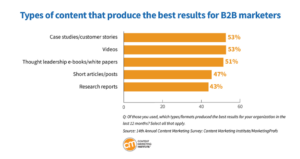Carving out a space for yourself as a thought leader requires more than sporadic bursts of activity. Much like nurturing a garden, growing your professional profile on platforms like LinkedIn demands regular attention, cultivation, and engagement.
Let’s address the elephant in the room straight away; building a thought leadership profile can feel daunting. You may wonder what to post, how often to post, and how to engage with your network in meaningful ways. The good news? There’s a roadmap for that, and it’s paved with consistency and quality.
Let’s start with the rhythm of posting. It’s less about flooding your network with content and more about establishing a steady drumbeat of insightful posts. Quality always trumps quantity. You want your connections to see your posts as high-value stops in their daily scroll through their feeds.
Now, onto the meat of the matter: what kind of content should you be sharing? Here lies the core of your thought leadership. Share articles and insights that reflect your expertise and interests. This could be industry news, trends, or research that you find compelling. It’s not just about showcasing your knowledge but also about sparking conversations that matter. For B2B marketers, understanding the impact that different types of content have on your audience can help you drive engagement and build stronger relationships across your network.

As the Content Marketing Institute points out, case studies and success stories are incredibly powerful tools in your content arsenal. By sharing real-world examples, you provide a window into how theories are applied in practice, which is invaluable for your network. It’s storytelling with a purpose, and who doesn’t enjoy a good story that teaches something new?
Another way to engage your audience is by sharing personal anecdotes and lessons learned. Authenticity is your best ally here. When you open up about your experiences, you not only build credibility but also establish a deeper connection with people in your network. Sharing your professional journey, challenges you’ve overcome, and the wisdom you’ve gathered along the way can inspire others and reinforce your role as a genuine thought leader. When you pepper your stories with anecdotes they tend to bring out your personality and allow your readers to get a glimpse of the person behind the written words.
Now, you know what is next, right? Commenting and discussions. Engagement is a two-way street. When you actively participate in discussions and leave thoughtful comments on other people’s posts, you show you are not there just there to preach—you’re there to listen and collaborate. But there is something more effective than intention. And that’s access to people and networks. When you show up in the conversational feeds on LinkedIn, you become visible to whole new connected communities and the topics that matter to them. It’s network amplification at its finest.
When you are thinking about content on LinkedIn it’s important to also recognise that it isn’t a text-only platform—far from it. Infographics, videos, and images can make your content more engaging and accessible. A well-placed graphic can bring data to life, and a brief video can convey your message with personality and immediacy that text posts may lack. This may take longer and more effort, but just try a test. Drop a short video and watch your reach soar.
Circling back to consistency
Content is essential, but don’t overlook the value of consistency in personal branding. Regular engagement helps you stay on top of mind with your network. It’s like seeing an old friend regularly; you’re more likely to remember them and the conversations you’ve shared. So, keep that steady presence, and you’ll find that your network is more likely to turn to you for insights and discussions.
Practical tips to remember? Schedule your content, engage daily—even if it’s just a quick browse and a few comments, and use tools to monitor the performance of your posts. This way, you can refine your strategy based on what resonates with your audience.
Building a thought leadership profile is a marathon, not a sprint. It’s about contributing value consistently, engaging with sincerity, and sharing your unique perspective. And remember, as you help others grow by sharing your knowledge, your profile will grow alongside.


Trackbacks/Pingbacks